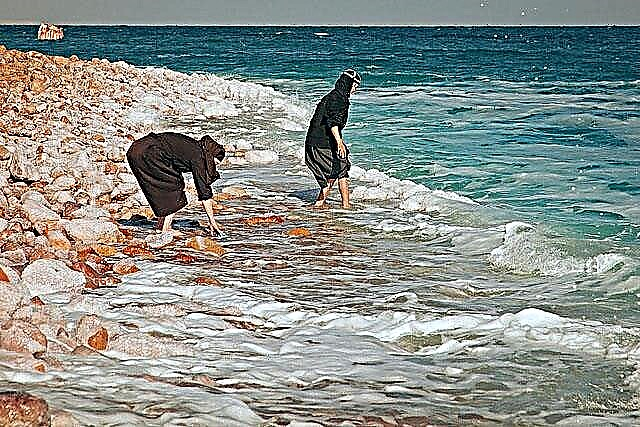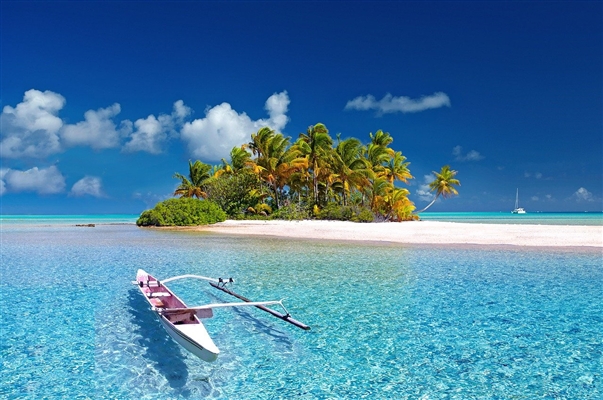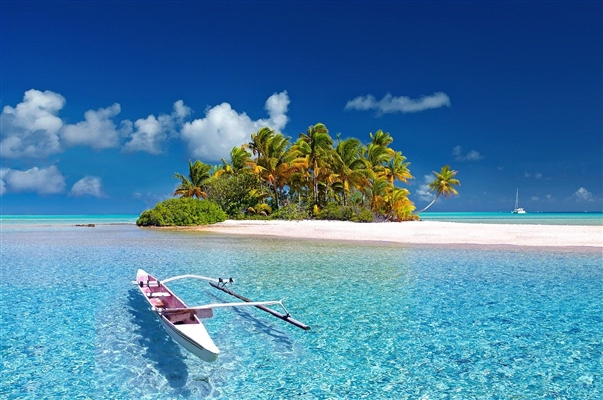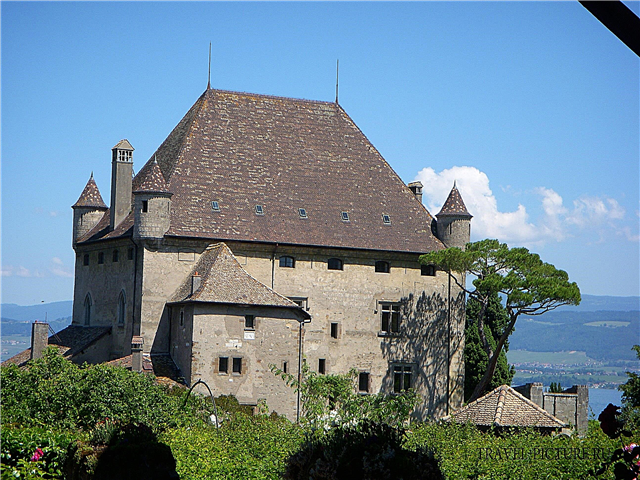Slovakia is a country in the center of Europe. The country managed to preserve more than 100 ancient palaces and castles. Not all of them survived, many suffered during the years of suppression of the uprising against the Habsburgs. The restoration and reconstruction of a large number of ancient fortresses is still underway.
Every year the castles are visited by a huge number of tourists who dream of admiring the mysterious structures that protected residents from enemy raids, hiding family and love secrets. Castles attract filmmakers who shoot their films against the backdrop of majestic structures that were once impregnable. Some are included in the UNESCO World Heritage List.
The most interesting medieval fortresses in Slovakia
List, photos with titles and descriptions!
Spissky Grad
The ruins of the castle are located near the town of Levoca. The first mention appeared in 1209 as the property of the Hungarian Crown. In 1464, representatives of the Zapolyai family became its owners. The castle, which was the largest building of medieval Europe, occupied an area of 2 hectares, under its walls could hide and live up to 2000 people. Currently, the castle hosts performances organized by the Historical Reconstruction Club. Restoration work is underway.

Bratislava Castle
Located on a cliff on the left bank of the Danube, the castle was first mentioned in 907. In those years, it served as a strategically important point at the crossroads. The Amber Road also passed through the Grad. Hungarian kings were crowned here. On July 7, 1207, Saint Elizabeth of Hungary was born in the castle. In the middle of the 18th century, the fortress became the seat of the Habsburg court. Currently, the territory of the fortress houses the Slovak Folk Museum, which includes exhibitions from prehistoric times to the present.

Bojnice castle
One of the most beautiful and fabulous castles is located in the town of Bojnice. The first owner is Matus Cak, the real ruler of medieval Slovakia. In the 15th century, the castle passed to Matthias "Corvin" Hunyadi, who loved to dictate his decrees under the still-preserved Lipa of King Matthias. The castle passed from one owner to another until it burned down in 1950. After its restoration, it housed a branch of the Slovak National Museum, and films with fairy tales are being filmed.

Orava Castle
The first mention of the castle dates back to 1267. The castle is located on a cliff at an altitude of 112 meters on the banks of the Orava River. The fortress was enlarged due to constant building, the latest information dates back to the 17th century. The castle burned down in a fire in 1800, reconstruction work was carried out in 1953-68. Placed exhibitions of the Orava Museum. The episodes of the 1922 film about Count Dracula were filmed here. There is a ghost at the castle - the White Lady.

Trenchyansky Castle
The castle has been dominating the city of Trencin since the 11th century. On the rock where it is located, there is an inscription about the defeat of the Quads tribe by the Roman troops in 179. Since the 13th century, the castle passed into the possession of Matushu Caku. In 1270, he rebuilt the Tower, founded during the construction of the fortress, in the Gothic style. On the territory of the castle were built the palaces of Ludovit, Barbara, Sigismund, the Southern fortifications and the Cannon Bastion. The expositions of the Trenčín Museum are currently open for review.

Chakhtitsa castle
The dilapidated castle rises on a cliff 375 meters high between the cities of Cachnice and Vishnece. Built at the beginning of the 13th century to defend against attacks from the west. In 1585-1610, the "bloody countess" Elzbieta Bathory, who was later imprisoned here, committed atrocities in it. The high cliff offers wonderful views of the Carpathian Mountains and the Miyava plateau.

Cherveni-Stone
A beautiful medieval castle was founded on the slope of the Lesser Carpathians by order of the queen-widow of Constanta as a defensive fortification in 1230. He owns the largest cellars in Europe, used as a system of secret passages. After the reconstruction of 1976-98, expositions of the Museum of Noble Life were opened in the premises. Theatrical events on historical themes are staged in the courtyard of the castle, fairs and festivals are held.

Lupcea
Built in the XIII century, the castle was part of the dowry of the Hungarian heiresses. The earthquake of 1443 was significantly damaged, after which it changed owners. Here you can admire the ancient frescoes in the chapel, sit under a 700-year-old linden tree and make a wish. A 62-meter well is carved into the rock and ends with a secret passage outside the territory of the castle.

Devin
The castle was built at the confluence of the Danube and Morava as a defensive fortification. The first mentions date back to the times of the Celts. Blown up by the French conquerors in 1809. At present, it is a symbol of the popular movement for the national revival of the country under the leadership of L. Stuhr. The castle houses an archaeological museum.From April to November, you can see the ruins of a Roman camp.

Strechnyansky Castle
The castle was built at the end of the XIII, the beginning of the XIV century on a rock with a height of 420 meters as a defensive fortification by order of Matush Chak. Moats were dug around the fortress. It passed to different owners until it was destroyed at the end of the 17th century. After reconstruction it was given to the Povazh Museum. Now you can visit a real, old smithy here. The main and northern towers, South, North and partly Eastern palaces are open for inspection.

Krasna Guorka
One of the most beautiful and famous castles is located in Eastern Slovakia. Founded around 1320. At various times it belonged to the families of Bebeks, Mariasha and Andrashi. The castle houses a permanent museum with a collection of weapons, torture devices, medieval furnishings and musical instruments. A glass coffin with the mummy of Zofia Seredi, the wife of one of the owners, has survived.

Betskov
First mentioned in the 12th century, the castle was built on a 70-meter cliff in order to strengthen the borders of the Hungarian state. Rebuilt in Gothic and Renaissance style. There is a legend that the castle was named after the jester Betska, for whom it was intended. The castle burned down in 1729 and was not restored until the 1990s. Now on the territory they stage theatrical performances based on historical plots, they conduct tastings of local beer and meat delicacies.

Banska Bystrica
Built around the old Church of the Assumption of the Virgin Mary in the center of the city. The complex, built in the XII-XIII centuries, included defensive walls and religious buildings. From the walls that surrounded the city in the 16th century, there are only three bastions, a defensive tower with three bells, one of which has a mass of 10 tons. Several museums function in the fortress.

Smolenitsky
The West Slovak castle in the Lesser Carpathians appeared in the 15th century as a sentry outpost. Currently, the building belongs to the Slovak Academy of Sciences, which uses it for various scientific events. It is possible to get acquainted with the medieval interiors by prior arrangement of the visit.

Budatinsky
The royal castle was built in the 13th century at the confluence of the Kisutsa and Vah rivers on the site of a trade route. Later it belonged to the Sunegovtsy and Chuck families, who made changes to the Gothic building. In 1715 a garden was laid out around the fortress. After a fire by the Habsburg troops in 1849, the owners restored the castle in the classical style. In 1922-23 the castle was reconstructed again. In 2007, the fortification was handed over to the Povazh Museum, which opened historical expositions here.

Nitran
The fortification, built in the 11th century, served the defensive goals of the Nitran principality, and after being incorporated into Great Moravia, it became an administrative center. The castle successfully repelled the raids of the Mongol conquerors, but in 1663 it fell briefly under the blow of the Ottomans.The castle has preserved the Church of St. Emeram of the XI century, the episcopal palace of 1732-1739. Currently, it is a religious center, which is open to visitors.

Lyubovnyansky Grad
The fortified castle was built at the end of the 13th century on the trade route to Poland. The construction is attributed to the Polish prince Boleslav. It was both Hungarian and Polish, until in 1590 it began to belong to Sebastian Lubomirsky. After the death of Theodor Lubomirski in 1745, the castle returned to royal possession. At present, it is given to the Lyubovnyansky Museum and is being restored. Its exposition features royal regalia, including copies of those that have not survived.
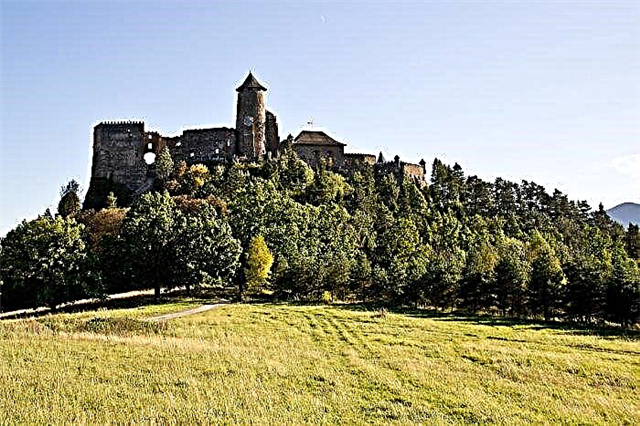
Kezhmarsky
Built in late Gothic style in 1463, the castle is located next to the Kezmarok ski resort in the High Tatras. A defensive tower has survived; it used to be a drawbridge. The interiors of the castles are undergoing reconstruction. A baroque chapel with beautiful frescoes was built on the territory. Visitors are allowed into the castle in small groups; on Halloween, theatrical performances are held.

Zvolensky
By order of Louis I the Great, the castle was built in 1360-1382 by Italian craftsmen. It was never taken by the conquerors. Currently, the expositions of the Slovak National Gallery present the work of European painters of the 16th-18th centuries, including original paintings by Rubens, Veronese, Hogarth. In summer, the complex hosts the Zvolensky Theater Festival and the Zvolensky Castle Craft Festival.

Likava
The ruins of the largest castle in Liptov, the historical region of Slovakia, have survived. The first mention of the castle dates back to 1315. It changed several owners until it became royal in 1447. The upper and lower locks were added. In the rock in the 17th century, a passage was cut from the lower tier to the western courtyard in the bastion of the upper castle. In recent years, the lower and upper locks have been restored.

Filyakovsky Grad
One of the few defensive fortresses that did not fall under the onslaught of the Mongol conquerors. The first mention of a fortress built on a high hill dates back to 1242. In 1554, the Ottoman invaders took over by cunning. In 1682, Tököli was conquered by the rebels with a 60,000-strong Turkish army and blown up. Since 1972, restoration work has begun. In 1993, the remains of the castle were allowed to be visited by tourists. Finds of archaeological research are presented in the Babek tower.

Sitnyansky
The fortress was built in the 13th century to repel the invasions of Mongol troops, but it was first used in historical sources only in 1548. It was taken into royal management, after rebuilding it began to serve as a fortification against the Turkish conquerors. After the uprising of Rákóczi in 1703, it was destroyed to the ground. Picturesque ruins have survived from the castle.

Sharish
The castle was built as a fortified point on the trade route along the Toris River. The first mention dates back to 1245 under the name "Sharush". Intended for the official royal residence when the kings visited Sharish. In 1660, during the possession of the castle by the Rákóczi family, the arsenal exploded, in 1687 the castle was destroyed by fire. In the castle, theatrical events are held annually in order to raise funds for restoration.

Budmeritsa
The castle at the foot of the Lesser Carpathians, east of Modra, was created in 1889 by the Palfi family. During its construction, it turned out to successfully combine the Gothic, Renaissance and Romantic styles. Around it there is an English garden and a forest with specially equipped lakes and gazebos. In the garden there is a Gothic church and a chapel of the Virgin Mary. In 1945, the building was transferred to the Slovak National Union of Writers.

Lietava
The construction of a castle on a mountain hill as a defensive fortification against the raids of the Tatar-Mongols began in 1241. The building was considered the third largest in the entire country. Much attention was paid to the fortress by the ruling families of Chaks and Thurzo. They built, fortified, reconstructed. It is said that the castle had 90 rooms. Since the 17th century, it has fallen into disrepair. From the majestic fortress, there are ruins to which a country road leads. Issues on its restoration are currently being considered.

Kremnica
The castle is located in Central Slovakia, was built during the XIII-XV centuries as a defensive fortification. Its center is the Gothic-style church of St. Catherine. The sculptures that belonged to him are still kept in the castle town hall. Medieval buildings are on a walled dais. Several museums are open on the territory of the castle, including the Museum of Coins and Medals, exhibitions of ancient firearms and archaeological finds discovered during the exploration of the territory.

Shomoshka
The castle, dating back to the 13th and 14th centuries, was built from stones found nearby. Its uniqueness is that it is formed by solidified volcanic lava. The castle changed several owners until in 1573 it was conquered by the Turks for almost 20 years. But it was destroyed not by them, but by order of the Austrian government after the suppression of the uprising. A fire in 1826 destroyed the remaining tower. Since 1972, attempts have been made to restore the castle. One of the towers has an observation deck.

Guardians
The castle is located near the town of Poprad. One of the oldest buildings in Slovakia was built by Gregor Horvath-Stansit. The exposition of the local museum offers to get acquainted with the noble families who owned the castle, the interior decoration and the portrait gallery of the owners. The castle houses the historical library of Slovakia, collected over the 4th century and numbering about 8,500 books, documents and maps.

Zborov
The ruins of the building were preserved 10 km north of the town of Bardejov. The Gothic building was erected at an altitude of 474 meters in the 13th century to protect trade routes between Poland and Hungary. The first information dates back to 1250. In 1364, gentlemen Tsudarovtsy became its owners, then the gentlemen of Seredovtsy. The castle was destroyed in 1684 by order of the Austrians. Restoration work is underway, and concerts are held on its ruins during the summer months.

Castle in Prevoz
Prevoz is a district of Bratislava, where Eugene Chaki built a house in 1902, made in romantic power. It had 50 rooms equipped with central heating. In 1933, the house went to the Order of the Daughters of St. Francis of Assisi, who established a monastery here. After nationalization, a nursing home was organized there. In 1989, the building was returned to the nuns.



